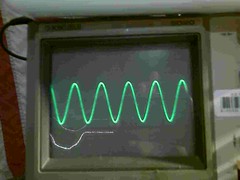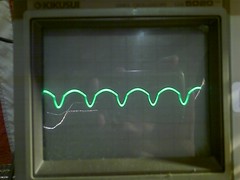[quote author="mischa"]
I do have to admit though that i had some difficulties regarding the 3 different q-bias adjustment instructions. The last i used was the on page one of this thread. To me it seems that the start-off point for this trimpot is in a way arbitrary, because the q-bias pot can be set to achieve a 1db reduction from any position, right? wrong, i'm afraid, but i don't know why.
[/quote]
Completely wrong. You must understand what you are doing before tweaking things. The FET needs to start off in a non-conducting state and then be biased just into conduction (a 1dB drop). Otherwise your FET is conducting all the time and needlessly attenuating the input signal (and operating at completely the wrong point in the FET characteristic curve)
So the Qbias start off point must be the position where Vgs is at the most -ve (ie wiper closest to R82).
[quote author="mischa"]
also, this one is the only one that should influence compression, right? So if i just turn it around without target, as soon as the compression sets in, the clicking also starts. :?
by the way, the clicking intensifies when i short the two left lugs of the attack pot.
[/quote]
You clearly have a fault in your GR amp circuit. Maybe you should also start tracing through this to find the problem? Are the DC bias conditions satisfactory? What are the bias point changes at different ratios? What is happening to your input signal at the drain of Q1 when this 'clicking' occurs?














![Soldering Iron Kit, 120W LED Digital Advanced Solder Iron Soldering Gun kit, 110V Welding Tools, Smart Temperature Control [356℉-932℉], Extra 5pcs Tips, Auto Sleep, Temp Calibration, Orange](https://m.media-amazon.com/images/I/51sFKu9SdeL._SL500_.jpg)

























